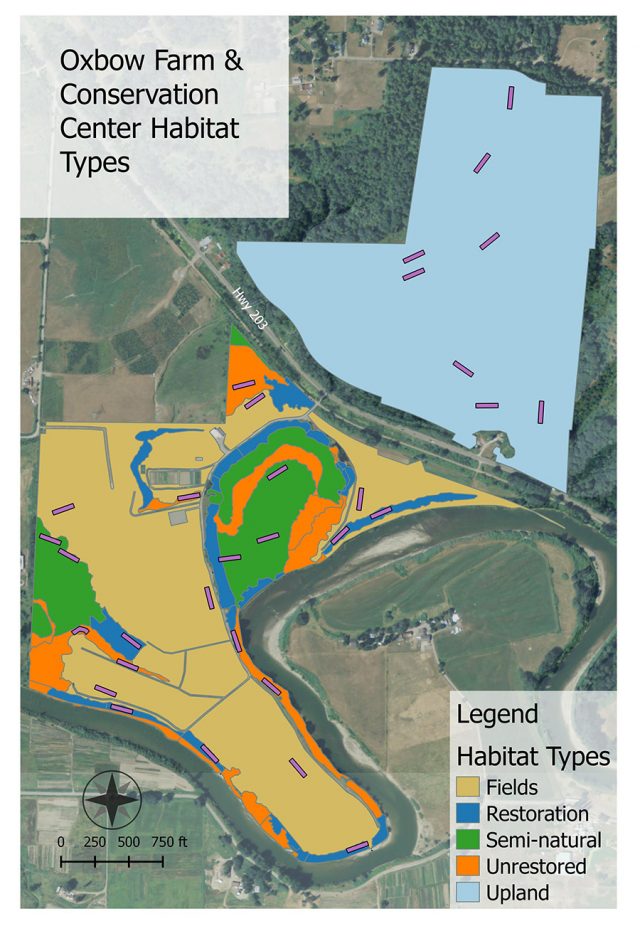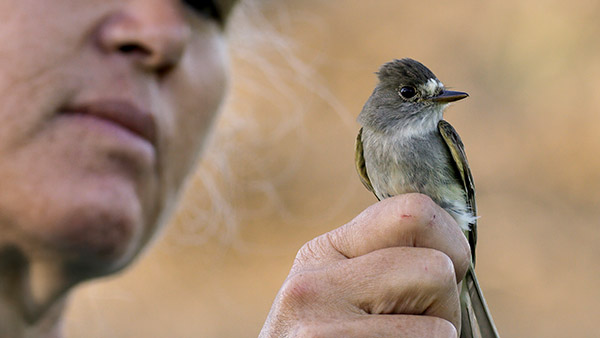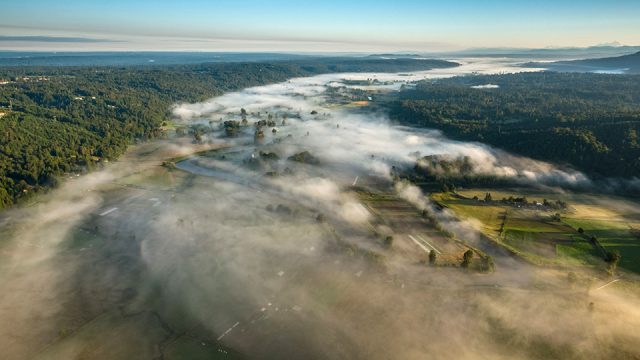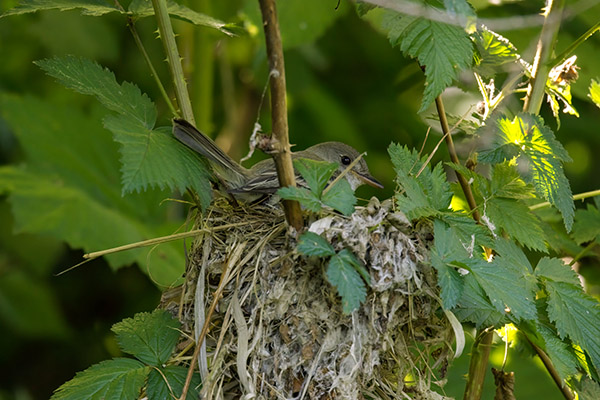Oxbow appears in National Geographic short film, Feathers in Flight
Over the past few years, Oxbow Farm & Conservation Center has served as a host for researchers studying how climate change impacts birds – all from the analysis of genetic material found in a single feather. The fascinating work is featured in the newly-released National Geographic film, Feathers in Flight: The Bird Genoscape Project. Read on to learn more about the Bird Genoscape Project and Oxbow’s participation in avian research, and view the beautiful short film below!
—
There’s no question about it: Oxbow simply wouldn’t be Oxbow without birds. From upland forest to valley farm fields that border the Snoqualmie River, the Oxbow landscape offers birds a variety of habitats that provide food, shelter, and an attractive place to raise young. Birds contribute to the balance of Oxbow’s ecosystem by dispersing seeds from native plants, eating insects, and providing a food source for mammals and other carnivores that live here. Over the past 4 years, our Conservation Team and committed community volunteers recorded over 100 bird species on Oxbow’s 240 acres.
A brief history of Oxbow’s avian research
While birds have always been a part of Oxbow’s natural history, focused research on them began in 2016 with a grant from Conservation Research and Education Opportunities International (CREOi) to study the way that bird communities are impacted by land use and ecological restoration in the Snoqualmie Valley.
In 2017, Oxbow began to work with community volunteers, particularly folks from the Puget Sound Bird Observatory, to continue to monitor the established research plots.

In July of 2018, the Puget Sound Bird Observatory introduced Oxbow to Mary Whitfield, a biologist at the nonprofit Southern Sierra Research Station who works with the cross-institutional Bird Genoscape Project. Through Mary’s work, Oxbow had the opportunity to contribute to an upcoming National Geographic short film; and most important of all, contribute to knowledge that will help protect more critical bird species in the future.
In search of flycatchers
The central focus of the Bird Genoscape Project is to use genomics technology to separate the migratory paths and identify wintering grounds for different populations of 100 North American bird species. Think of it almost like ancestry tracing for birds, similar to the popular mail-in DNA tests that help humans identify where their ancestors may have originated. With nothing more than a single feather, scientists can track data over time and learn more about exactly where certain populations of bird species live and breed. The work of researchers like Mary and other contributors to the Bird Genoscape Project will allow ecologists to better understand the impact of climate change on different species and populations and contribute to improved conservation efforts.

Mary was particularly interested in the ecology and conservation of the federally-endangered Southwestern subspecies of Willow Flycatcher. Since endangered species can understandably be more difficult to find and study for extended periods, Mary wanted to spend more time with the much more common Northwestern subspecies (Empidonax traillii breswteri) to better understand the endangered Southwestern subspecies (E. t. extimus).
Basically I view the Willow Flycatcher as a canary in a coal mine. It’s not doing well, so why is it not doing well here? And if you can solve that for the Willow Flycatcher, it’s probably going to prevent other bird species from having the same problems later on. – Mary Whitfield
With its proximity to the Snoqualmie River and ample brush that provides a home to an abundance of insects, Oxbow’s landscape offers ideal habitat for Willow Flycatchers. The tiny, insect-loving birds love to flit from branch to branch in shrubby forest understory, woodland borders, or dry thickets, often near streams or standing water. On summer days, males blurt out their familiar fitz-bew song from above, perched along the forest edges.

Oxbow was able to share data from past bird monitoring years (taken both by Oxbow’s Conservation team and community scientists from the Puget Sound Bird Observatory) to guide Mary to the best flycatcher habitats at Oxbow. There, she was able to observe, study, and take DNA samples via feathers collected from the birds.

Connecting the pieces
During Mary’s visit, film producers from Day’s Edge Productions took footage of her work and of Oxbow’s landscape to create a stunning 15-minute short film for National Geographic, titled Feathers in Flight: The Bird Genoscape Project, which was released in early 2021 (Oxbow appears at the 7:45 mark). Combined with footage from flycatcher wintering grounds in Costa Rica, the film paints a succinct and poignant picture of how the powers of genomic technology and a dedicated network of researchers can help us understand and protect critical bird populations.
Oxbow’s contributions to the Bird Genoscape Project didn’t end there. In 2019, Oxbow hosted a team of researchers from Colorado State University and University of California Davis who were measuring birds’ physiological reactions to temperature. Their research goal was to describe how genetics influence the way some birds adapt to temperature change, which can help paint a bigger picture of how climate change is impacting bird populations. COVID-19 prevented the researchers from returning to Oxbow to continue their research in 2020, but we’re hopeful that we can continue to partner with and host researchers again in the future.
Meanwhile, Oxbow’s own research and bird monitoring continues as we work alongside community scientists to monitor the ways that birds occupy various habitats throughout our 240 acres. We are especially interested in studying the ways that birds react to ongoing restoration of the riparian thickets and forests at Oxbow – vital habitats that the willow flycatchers depend on during their breeding-season stops.
Watch for more information on upcoming birdwatching events at Oxbow, including a day of bird-themed fun and tours on March 27th, 2021, to kick off a year of fun, exploration, and connecting to the earth!
Resources:
